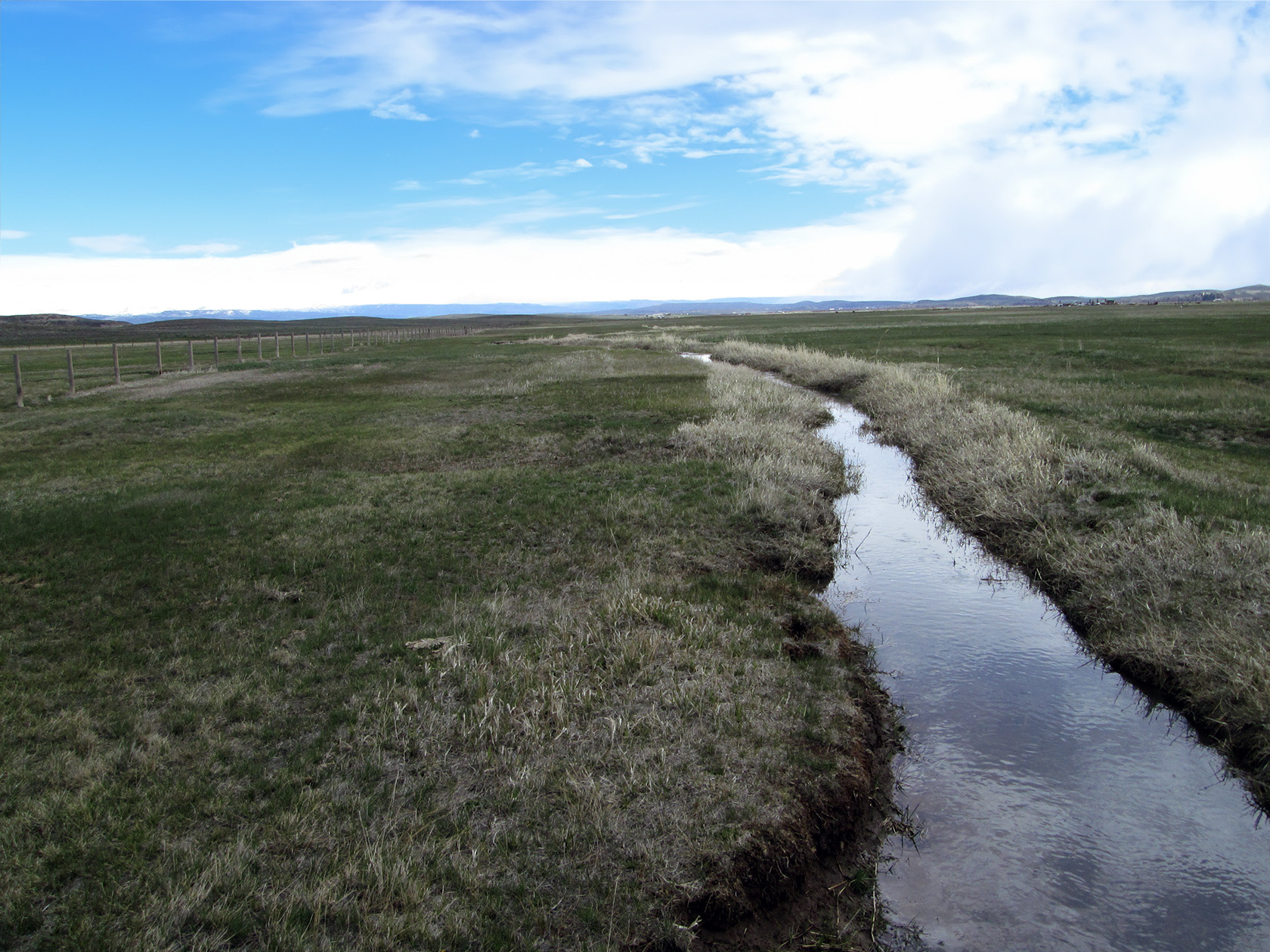
Lead Creek Conservation Easement Protects Sage-Grouse, Migration, Ag Lands
A successful collaboration between local landowners and the Green River Valley Program (GRVP) of the Jackson Hole Land Trust has resulted in 120 acres of the Horse Creek corridor in Daniel protected through a new conservation easement. The Lead Creek conservation easement contains terrain of significant value to both local agriculture and native wildlife. Thanks to the generosity of landowners Chad and Gary Hayward, this important piece of their ranching operation is now positioned to provide forage for livestock, reliable hay production, and vital wildlife habitat for future generations.
An important piece of the conservation puzzle in the Merna community, the newly protected parcel consists of wet hay meadows, willow shrublands, upland grasslands, and a half-mile of Lead Creek. Its conservation supports the ecological viability of the Green River watershed and safeguards a portion of the Sublette Mule Deer Migration Corridor along with open habitat that is contiguous with the surrounding landscape for seasonal movements of mule deer, moose, elk, and pronghorn. The entirety of the property lies within the Daniel Greater Sage-Grouse Core Area and provides vital brood-rearing habitat for sage-grouse as well as critical wetland and riparian services for neotropical migrant songbirds, migratory shorebirds (including long-billed curlews), and predatory birds including the great blue heron, sandhill crane, and several raptor species.
Both Hayward brothers have one foot in agriculture and another in natural resources management, inspired by their family’s background in agriculture and their concerns for the future of ranching and wildlife in the area. “We don’t want to see it developed,” says Gary Hayward. “Our background is in agriculture, and you can’t farm it if there are homes on it.”
Acknowledging the development pressure in the Merna/Horse Creek area, the brothers expressed concern about habitat loss and fragmentation and its effects on wildlife, especially the designated mule deer migration corridor, as well as impacts on agriculture. “If we can keep it from happening on what we can control, that’s what we want to do,” added Chad Hayward. “I grew up farming walnuts with my uncle on a 400-acre farm, and not one acre is farmable anymore.”
This experience of loss is not something the brothers want their family to go through, and after several years of patience, their Lead Creek property will be forever dedicated to agriculture, wildlife, and the network of open spaces in Sublette County.
“I think the Hayward family’s conservation easement is a great example of what landowners in Sublette County can do to help balance the pressures of development in our region, and I’m grateful to them for this contribution,” said GRVP Director Kerry Gold. “If you care about the future of agriculture in our community and the integrity of our ecosystems, conservation easements are an excellent tool that simultaneously benefits landowners and the public both economically and environmentally.”
This successful conservation easement would not have been possible without the commitment of the Hayward family and the support of the National Fish and Wildlife Foundation, Wyoming Governor’s Big Game License Coalition, Wyoming Wildlife and Natural Resource Trust, and Williams Inc.